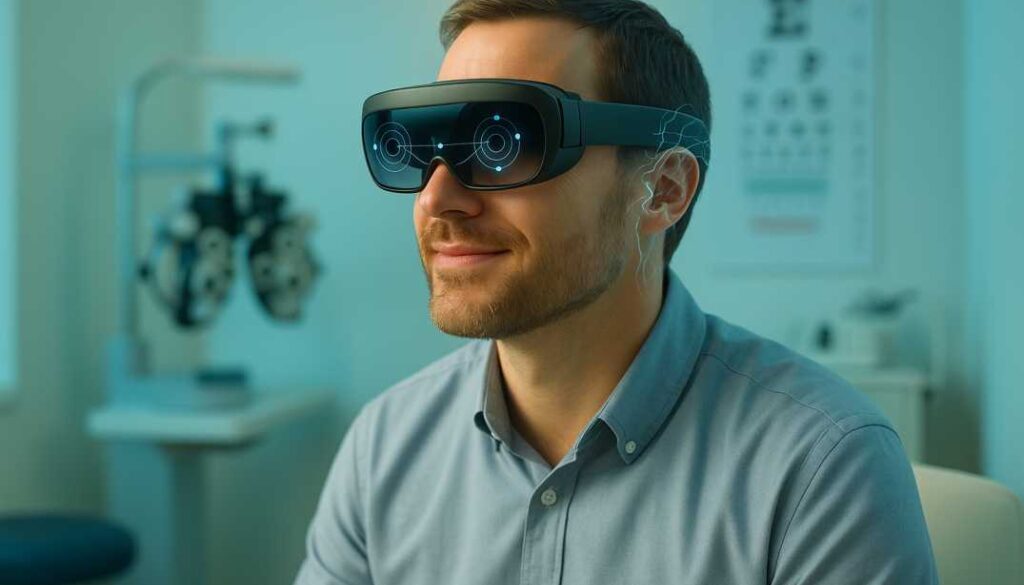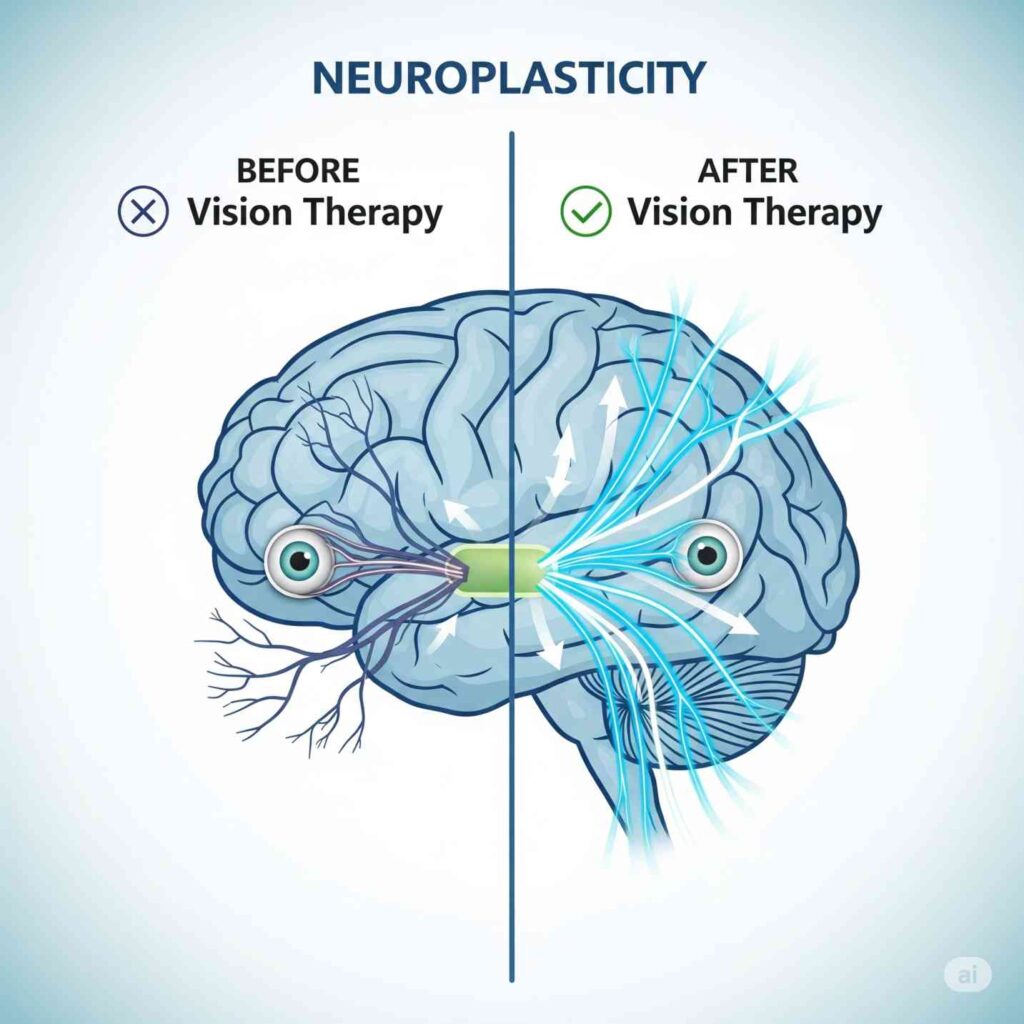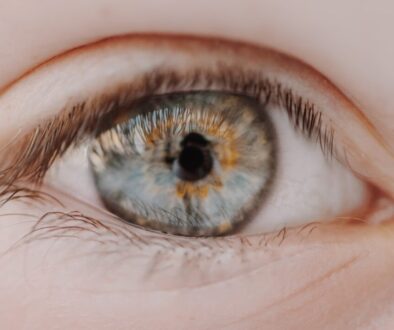Can Adults Fix Lazy Eye? 2025 Treatment Options

Bottom Line Up Front: Yes, lazy eye in adults can be successfully treated. Over 70% of motivated patients experience visual improvements through modern adult vision therapy, with clinical research demonstrating 61.9% success rates for comprehensive treatment programs. Recent breakthroughs in neuroplasticity research have revolutionized treatment options for lazy eye in adults, definitively disproving the outdated “critical period” myth.
Breaking the “Too Late” Myth: Hope for Adult Vision Recovery
For decades, adults with lazy eye received the same devastating diagnosis: “You’re too late for treatment.” This pervasive myth condemned millions suffering from lazy eye in adults to believe their vision problems were permanent and untreatable.
That era is over.
Groundbreaking research in 2024 and 2025 has shattered this outdated belief about treating lazy eye in adults. Clinical studies now demonstrate that adult vision therapy can produce remarkable improvements, with success rates approaching those seen in children when proper protocols are followed.
The revolutionary truth: your brain retains far more plasticity than previously understood, and modern treatment approaches can unlock visual improvements even decades after the traditional “critical period” supposedly closes.
Understanding Lazy Eye in Adults: Beyond Childhood Myths
The Reality of Adult Amblyopia
Lazy eye—medically termed amblyopia—results from poor development of binocular vision, the crucial ability that enables both eyes to work together and focus cooperatively. In adults, this condition manifests differently than in children, affecting approximately 2-3% of the adult population worldwide.
Primary causes in adults include:
- Untreated childhood conditions that progressively worsened
- Adult-onset triggers such as cataracts, eye injuries, or stroke
- Masked symptoms that became apparent only with aging or increased visual demands
Classifications of Adult Amblyopia
Refractive Amblyopia stems from significant prescription differences between eyes, where one eye may be substantially more nearsighted, farsighted, or astigmatic than its partner. This form typically responds most favorably to modern treatment protocols.
Strabismic Amblyopia Results from eye misalignment, where the brain suppresses input from the turned eye to avoid double vision. While more challenging to treat, breakthrough techniques now offer substantial hope for improvement.
Deprivation Amblyopia Cis is caused by physical obstructions like cataracts or drooping eyelids that prevent clear vision development. This form often requires combined surgical correction and therapeutic intervention.
The Neuroplasticity Revolution: Science Enabling Adult Recovery
Your Brain’s Hidden Potential
The most transformative development in amblyopia research centers on neuroplasticity—the brain’s remarkable ability to reorganize and form new neural connections throughout life. Contrary to decades of medical dogma, mounting evidence demonstrates that the adult visual system retains substantial capacity for improvement.
Key neuroplasticity discoveries:
- Visual cortex adaptation continues well beyond childhood
- Synaptic strengthening occurs with targeted, repetitive training
- Binocular integration can be restored through specialized therapeutic protocols
Breakthrough Research Findings
2024-2025 Clinical Evidence Revolutionary studies using virtual reality and dichoptic training demonstrate remarkable success rates. Perceptual learning protocols activate neuroplasticity, overcome interocular suppression, and measurably improve visual impairments induced by amblyopia.
Pharmacological Enhancement Pioneering research with donepezil, an acetylcholinesterase inhibitor, shows that 25% of adults achieved ≥2 lines of visual acuity improvement after just 12 weeks of treatment, with benefits maintained long-term.
Success Rate Documentation Clinical data confirms vision therapy achieves 61.9% success rates when combining in-office treatment with home exercises, while specialist centers report 80% success rates for surgical interventions when appropriate.
Comprehensive Treatment Options for Adults in 2025
Advanced Adults Vision Therapy
Professional Treatment Programs Modern vision therapy represents a dramatic evolution from simple eye exercises. These sophisticated programs combine cutting-edge technology with individualized protocols, supervised by specialists experienced in treating lazy eye in adults.
Core treatment components:
- Structured weekly sessions lasting 45-60 minutes over 6-12 months
- Personalized exercise protocols targeting individual deficits
- Objective progress monitoring using advanced diagnostic equipment
- Home reinforcement programs optimizing treatment outcomes
Therapeutic Exercise Categories
- Accommodation training for focusing on flexibility and endurance
- Saccadic rehabilitation for precise, controlled eye movements
- Pursuit therapy for smooth tracking abilities
- Convergence training for near-vision coordination
Revolutionary Dichoptic Training Technology
Dichoptic therapy represents a paradigm shift in treating lazy eye in adults. This innovative adult vision therapy approach simultaneously presents different images to each eye while carefully controlling contrast levels to rebalance visual input.
Technological Applications:
- Therapeutic video games using specialized 3D glasses for lazy eye in adults
- Virtual reality platforms providing immersive adult vision therapy experiences
- Online training programs enabling convenient home-based treatment
- Contrast-adjusted media, including movies and interactive content
Precision Optical Correction
Specialized Prescription Strategies. Many cases of lazy eye in adults stem from uncorrected or inadequately corrected refractive differences between eyes. Modern optical approaches include:
- Precise refractive correction to equalize visual input
- Progressive lens designs for seamless vision transitions
- Prism integration for alignment optimization
- Contact lens protocols for natural visual rehabilitation
Surgical Interventions: When Appropriate
Strabismus Surgery. For cases involving significant eye misalignment, surgical correction can provide the foundation for successful adult vision therapy. Current success rates at specialist centers approach 80%, with most patients experiencing substantial improvements in both alignment and functional vision.
Complementary Procedures
- Ptosis repair for drooping eyelids obstructing vision
- Cataract removal to eliminate optical impediments
- Refractive surgery to minimize prescription disparities
Effective At-Home Training Protocols
Evidence-Based DIY Techniques
Convergence Training Pencil push-ups remain a foundational exercise, involving slow movement of a target from arm’s length toward the nose while maintaining single, clear vision. This simple technique strengthens the eye’s ability to turn inward for near tasks.
Binocular Coordination Brock string exercises use a string with colored beads positioned at varying distances to train both convergence and divergence while developing awareness of proper binocular coordination.
Digital Training Platforms. Multiple sophisticated platforms now offer structured home programs for lazy eye in adults:
- AmblyoPlay for engaging, gamified visual exercises
- RevitalVision for perceptual learning protocols
- Bynocs for dichoptic video games and comprehensive adult vision therapy
Optimization Strategies
Five Keys to Home Training Success:
- Consistency trumps intensity – Daily practice yields superior results
- Progressive advancement – Begin with shorter sessions, gradually increasing duration
- Professional monitoring – Regular eye exams track objective improvements
- Multi-modal approach – Combine various techniques for comprehensive training
- Patience and persistence – Meaningful results often require weeks to months
Treatment Expectations: Timeline and Outcomes
Realistic Recovery Projections
Treatment Duration by Severity:
- Mild amblyopia: 3-6 months of consistent therapy
- Moderate cases: 6-12 months for significant improvement
- Severe amblyopia: 12-18 months with combined therapeutic approaches
Measurable Success Metrics:
- Visual acuity improvement of 2+ lines on standardized charts
- Enhanced depth perception and stereoscopic vision
- Reduced eye strain, headaches, and visual fatigue
- Improved reading speed, comprehension, and endurance
- Better performance in sports, driving, and occupational tasks
Success Factors and Challenges
Positive Predictors:
- High motivation and treatment compliance
- Regular professional supervision and guidance
- Younger adult age (optimal outcomes in 20s-40s)
- Refractive rather than strabismic etiology
- No history of unsuccessful previous treatments
Potential Obstacle: The extended treatment duration compared to children
- Sustained motivation requirements over months
- Temporary adaptation symptoms during therapy
- Individual variation in neuroplastic response
Overcoming Implementation Barriers
Addressing Adult-Specific Challenges
Time Management Solutions:
- Flexible scheduling accommodating work commitments
- Hybrid programs combining office visits with home training
- Extended hours and weekend appointment availability
- Efficient session designs maximizing therapeutic benefit
Motivation Maintenance Strategies:
- Clear goal establishment with measurable milestones
- Regular progress reviews and celebration of improvements
- Education about treatment rationale and expected outcomes
- Support group connections with other adult patients
Financial Investment Analysis
Comprehensive Cost Breakdown:
- Adult vision therapy programs: $1,000-$5,500 for complete treatment
- Individual therapy sessions: $150-$200 per specialized hour
- Comprehensive evaluation: $300-$500 for lazy eye in adults assessment
- Ongoing monitoring: $100-$200 per follow-up appointment
- Home training systems: $100-$500 for equipment and software
Comparative Investment: Surgical alternatives range from $3,800-$9,600 for strabismus correction, often requiring additional procedures for optimal outcomes.
Insurance and Financing:
- Many medical insurance plans cover medically necessary adult vision therapy
- Vision insurance frequently includes therapeutic benefits
- Health Savings Account and Flexible Spending Account eligibility
- Payment plans are available at most specialized practices
Selecting the Optimal Treatment Provider
Essential Practitioner Qualifications
Required Credentials:
- Board certification in developmental optometry
- Fellowship training in adult vision therapy
- Demonstrated experience treating lazy eye in adults
- Access to state-of-the-art diagnostic and therapeutic technology
Optimal Practice Philosophy:
- Evidence-based belief in adult neuroplasticity for treating lazy eye in adults
- Comprehensive evaluation protocols
- Realistic expectation setting for adult decision therapy outcomes
- Long-term commitment to patient success
Critical Evaluation Questions
Provider Assessment Inquiries:
- How many patients with lazy eye in adults have you successfully treated?
- What specific success rates do you achieve with adult vision therapy for my age demographic?
- Which evidence-based approaches do you recommend for my particular case of lazy eye in adults?
- What realistic timeline should I expect for an adult vision therapy treatment?
- How will home exercises integrate with office-based adult vision therapy?
- What objective measures will track progress throughout treatment for lazy eye in adults?
Patient Success Stories: Real-World Transformations
Professional and Personal Impact
Career Enhancement: Adults report significant workplace benefits, including improved computer efficiency, enhanced reading stamina, better presentation capabilities, and reduced visual fatigue during demanding tasks.
Quality of Life Revolution: As one patient testimonial reveals, “Through visual rehabilitation, I have reclaimed huge tracts of my life. I drive, shop, work around the house, help others around their homes, eat, and read with pleasure.”
Athletic and Recreational Gains:
- Enhanced sports performance through improved depth perception
- Safer driving with better distance judgment
- Greater enjoyment of movies, entertainment, and 3D experiences
- Increased confidence in social and professional interactions
Long-Term Outcome Sustainability
Maintained Improvements: Research demonstrates that benefits from modern treatment protocols remain stable for at least two years post-therapy, with many patients experiencing continued enhancement as newly developed visual skills strengthen through daily use.
Investment Analysis: Cost Versus Benefit
Financial Return on Vision Investment
Career and Productivity Benefits:
- Enhanced job performance and efficiency
- Expanded career opportunities requiring visual precision
- Reduced sick leave due to eye strain and visual fatigue
- Increased earning potential through improved capabilities
Quality of Life Value: The ability to drive safely, read comfortably, and enjoy three-dimensional entertainment represents immeasurable personal value extending far beyond financial considerations.
Healthcare Cost Avoidance: Successful treatment may prevent future complications, reduce dependence on corrective lenses, and minimize work-related vision problems requiring ongoing medical intervention.
Future Frontiers in Adult Amblyopia Treatment
Emerging Technological Solutions
Virtual Reality Integration: Large-scale clinical trials are testing innovative treatment protocols using VR headsets for immersive adult vision therapy. These platforms promise more engaging, effective treatment experiences for lazy eye in adults.
Artificial Intelligence Enhancement:
- Personalized treatment protocols adapted to individual progress
- Real-time optimization of therapeutic parameters
- Predictive modeling for treatment outcomes
- Automated home training guidance and support
Research Horizons
Combination Therapy Protocols: Scientists investigate optimal combinations of adult vision therapy with pharmacological enhancement, surgical correction, and advanced technology platforms.
Biomarker Development: Ongoing research seeks to identify genetic, physiological, and behavioral predictors of treatment success, enabling personalized medicine approaches for lazy eye in adults.
References and Additional Resources
Key Scientific Studies and Research
-
“Can Lazy Eye Be Cured in Adults? Latest Treatments in 2025” – The London Squint Clinic
Comprehensive review of current treatment options and success rates for adult amblyopia, including the landmark finding that over 70% of motivated adults experience visual improvements with appropriate therapy.
https://www.londonsquintclinic.com/can-lazy-eye-be-cured-in-adults-latest-treatments-in-2025/ -
“Efficacy of Vision Therapy for Convergence Insufficiency in an Adult Male Population” – PubMed
Clinical research demonstrates 61.9% success rates for adults receiving in-office vision therapy combined with home exercises, providing evidence-based support for adult treatment protocols.
https://pubmed.ncbi.nlm.nih.gov/10457698/ -
“Durable Recovery from Amblyopia with Donepezil” – Scientific Reports (Nature)
Groundbreaking study showing pharmacological enhancement of neuroplasticity in adults, with 25% of participants improving ≥2 lines of visual acuity after 12 weeks of treatment.
https://www.nature.com/articles/s41598-023-34891-5
Conclusion: Your Vision Recovery Journey Begins Today
The treatment landscape for lazy eye in adults has undergone a complete transformation. The antiquated notion that “nothing can be done” after childhood has been definitively replaced by evidence-based optimism and documented clinical success with adult vision therapy.
Irrefutable Facts:
- Treatment for lazy eye in adults is not only possible but highly effective – Over 70% of motivated adults achieve meaningful improvements.
- Multiple sophisticated adult vision therapy options exist – From traditional protocols to cutting-edge virtual reality training.
- Adult neuroplasticity enables continued learning – Your brain retains the capacity to develop new visual skills.s
- Professional expertise optimizes outcomes – Specialized care dramatically improves success rates for lazy eye in adults.
- Sustained commitment yields lasting results – Consistent effort produces life-changing visual improvements.
The fundamental question is not whether treatment for lazy eye in adults works—extensive research confirms its effectiveness. The question is whether you’re prepared to begin your vision recovery journey with adult vision therapy.
With modern evidence-based approaches, experienced specialists, and your commitment to the therapeutic process, enhanced vision and dramatically improved quality of life await.
Don’t allow outdated medical myths to limit your potential. Your visual capabilities may far exceed what you’ve been told. Take the decisive first step today by scheduling a comprehensive evaluation with a qualified adult vision therapy specialist who has extensive experience treating lazy eye in adults.
Your transformation begins with a single choice: the decision to pursue adult vision therapy despite any discouraging messages you may have received about lazy eye in adults. That choice has the power to revolutionize not just your vision, but your entire life experience.
This article is for educational purposes and should not replace professional medical advice. Consult with a qualified eye care professional for personalized treatment recommendations.
FAQs
-
Yes, lazy eye can be treated in adults. Research shows the brain retains neuroplasticity at any age, allowing visual improvement with consistent treatment.




